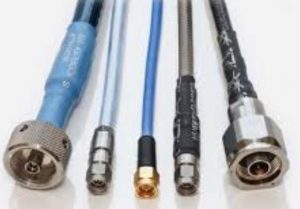Understanding Broadwall Management in Waveguide Design
In waveguide design, broadwall management plays a crucial role in optimizing the performance of waveguide components, such as directional couplers. Broadwall management techniques focus on minimizing undesirable effects associated with the broadwall of the waveguide, ensuring efficient signal transmission and reducing signal loss.

Broadwall Characteristics
The broadwall of a waveguide refers to the larger dimension of the rectangular or circular cross-section. In contrast, the narrow dimension is termed the sidewall. Due to its larger size, the broadwall can introduce unwanted modes and reflections, leading to signal distortion and loss if not properly managed.
Key Techniques
Mode Suppression
One primary objective of broadwall management is to suppress higher-order modes that can propagate in the broadwall direction. These modes, such as TE and TM modes, can degrade the performance of waveguide components by causing mode conversion and additional signal loss. Techniques like mode filters and mode converters are employed to suppress these unwanted modes effectively.
Wall Coating
Applying specific coatings to the broadwall surface can help reduce reflections and attenuate unwanted modes. These coatings, often made of materials with high absorption properties, absorb energy from unwanted modes, preventing them from interfering with the desired signal. Additionally, coatings can improve the impedance matching between the waveguide and connected components, enhancing overall performance.
Geometry Optimization
Optimizing the geometry of the waveguide structure can also contribute to effective broadwall management. By carefully designing the dimensions and shapes of the waveguide, engineers can minimize the propagation of unwanted modes and reduce reflections along the broadwall. This optimization process may involve iterative simulations and testing to achieve the desired performance goals.
Applications and Benefits
Broadwall management techniques find widespread use in various waveguide components, including directional couplers, isolators, and filters. By effectively managing the broadwall, these components can achieve higher isolation, lower insertion loss, and improved overall performance.
Broadwall directional couplers, for example, utilize advanced broadwall management techniques to ensure precise signal coupling and minimal signal distortion. These couplers are essential for signal monitoring, power combining, and signal distribution in microwave systems.
Conclusion
In conclusion, broadwall management is a critical aspect of waveguide design aimed at optimizing the performance of waveguide components. By employing techniques such as mode suppression, wall coating, and geometry optimization, engineers can mitigate the effects of unwanted modes and reflections, leading to improved signal integrity and overall system efficiency. Incorporating broadwall management strategies enhances the functionality and reliability of waveguide-based systems in various applications.